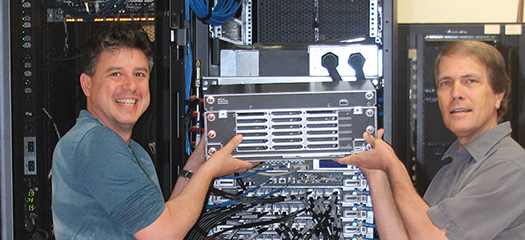The road to the NNSA’s first exascale-class supercomputer, El Capitan, began several years ago. This enormous undertaking of meticulous planning and strategic collaborations is already bearing fruit in a number of ways. For instance, close coordination with the DOE Exascale Computing Project, Office of Science Advanced Scientific Computing Research program, and the NNSA Advanced Simulation and Computing (ASC) program has paved the way for secure integration of national security applications with a robust, exascale-ready software stack.
Enjoy this multi-part article series about Livermore Computing’s efforts to stand up the NNSA’s first exascale supercomputer. El Capitan will come online in 2024 with the processing power of more than 2 exaflops, or 2 quintillion (1018) calculations per second. The system will be used for predictive modeling and simulation in support of the stockpile stewardship program. A PDF of the compiled article series is available for download. In addition, check out our El Capitan Fun Facts downloadable PDF.
1: It Takes a Village
"People across the Lab are pulling in the same direction for what will be one of the best computing systems in the world," says LC chief technology officer Bronis de Supinski.
2: All the Moving Parts
"The functionality that El Capitan is going to unlock for our users and for the programs is the most exciting aspect," states integration Project lead Adam Bertsch.
3: The Right Operating System
"It's becoming more and more obvious to everyone that we really can do this," notes Jim Foraker, Systems Software and Security Group leader.
4: Storage in the Exascale Era
"Integrating Rabbits into the early access systems, and ultimately into El Capitan, is a huge co-design effort," says Brian Behlendorf, I/O lead.
5: A Framework for Complex Workflows
"We are providing more capable resource management through hierarchical, multi-level management and scheduling schemes," states LC division leader Becky Springmeyer.
6: Modern Compilers
"There are a lot of opportunities for things to go wrong in a compiler," says ATS compiler team lead John Gyllenhaal.
7: Packaging for Everyone
“We need to be able to support El Capitan users regardless of their packaging solution," says Greg Becker from the Packaging Working Group.
8: Prepping for Performance
Computer scientist Olga Pearce states, “It will be rewarding to see how all of our efforts contribute to the mission.”
9: Messaging and Math
“What we’re doing will enable El Capitan to handle a class of workloads that was never possible before,” notes Matt Leininger, Messaging Working Group lead.
10: Collaboration Is Key
“I’m excited for those moments when El Capitan will surpass our expectations,” says Judy Hill, LLNL Center of Excellence lead.
11: Industry Investment
"Every day there’s a challenge you didn’t see coming. Transparency plus time equals trust," says Brick Stephenson of HPE.
Road to El Capitan: Booklet
The entire article series is compiled into a booklet, now available on LLNL's HPC website.











